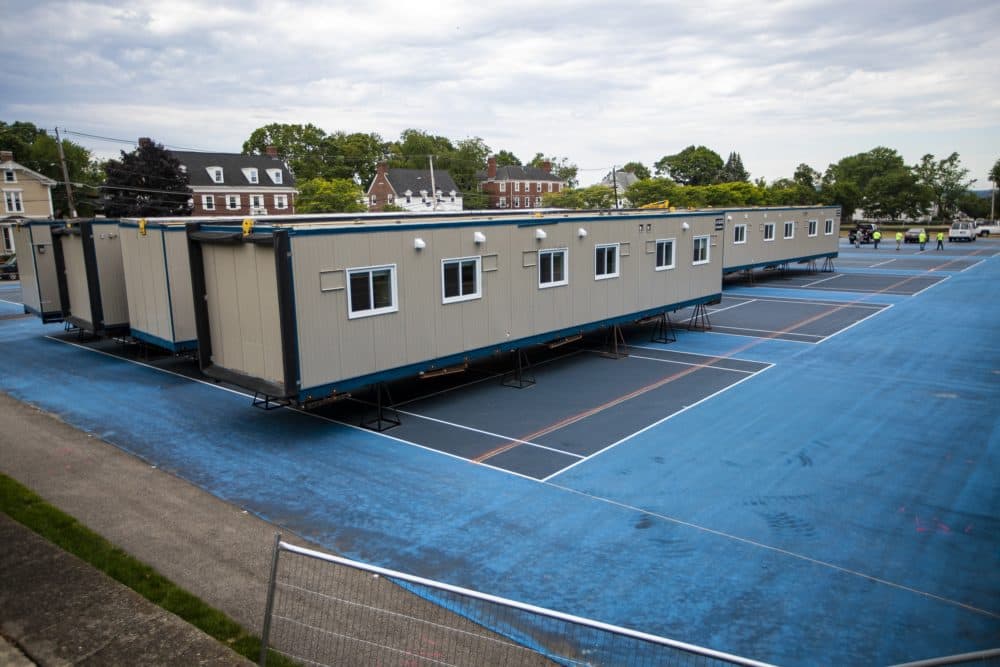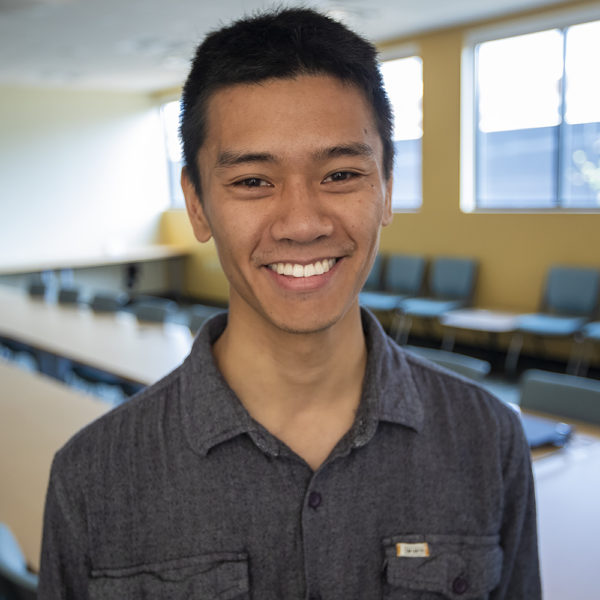Advertisement
Coronavirus Coverage
As Universities Prepare To Bring Students Back, Some Turn To Mass Coronavirus Testing
Resume
When Tufts University President Anthony Monaco looks out his window these days, he sees rows of trailers set up on the campus tennis courts. The university calls them “The Mods” – short for modular housing – and they’ll hold hundreds of temporary rooms for students who may need to isolate themselves if they get the coronavirus or the disease it causes, COVID-19.
“That’s where we will keep all students that end up testing positive. There’ll be health surveillance and a medical team in charge of all that,” Monaco says. “So, we [will] not be isolating people in the dorms.”
The Mods are part of Tufts’ answer to a conundrum that college and university presidents across the country are facing right now: how to safely bring thousands of students back to campus for the fall semester. With the coronavirus still spreading, Tufts will need to find and isolate students who become infected as quickly as possible. So, Monaco says the university will be doing a lot of mandatory coronavirus testing.
“We decided to test the students both on campus and off campus twice a week,” he says. “But faculty, staff and others only once a week.”
That frequency of testing isn’t arbitrary, Monaco says. He and other university presidents are relying on recent research to figure out how often they need to test the students living, breathing and studying together on their campuses, as well as faculty and staff. Dr. Rochelle Walensky, the chief of infectious diseases at Massachusetts General Hospital, is one of the scientists working on that research.
Walensky and her colleagues began running computer simulations on a hypothetical campus of 5,000 students. They looked at what would happen if 10 of them came back to school with coronavirus infections but no symptoms, and added the occasional infection that might enter campus from the outside community. One of the first things Walensky found was that it would be impossible to contain COVID-19 if universities wait to test students until after they start showing symptoms.
“Outbreaks occurred in all of the scenarios when we employed symptom testing only,” she says. “Symptom testing is likely not going to be enough.”
In the model, outbreaks could be controlled when the university frequently tested the whole student body . Universities have limited budgets, though, and the most accurate tests can be expensive, Walensky says. But the model showed a cheaper, lower-accuracy test, if administered more often, actually performed better.
“So, I would rather have a $5 dollar test that’s 70% sensitive than a $50 dollar test that’s 90% sensitive," Walensky says, "because a $5 dollar one, I might be able to do every day.”
Here's an example: If a university has 100 infected students, a test that finds only 70% of them will allow you to isolate 70 of those students. If you do the test again the next day, then you can catch another 21 cases, identifying over 90% of infections within two days.
“That, in my mind, is way better than having a 95% sensitive test you’re only doing weekly,” Walensky says.
How often universities will need to test students also depends on the students themselves, Walensky says. If they do well at following COVID-19 precautions, they might be able to keep down the number of new cases that each infected student causes — a number epidemiologists call the reproductive number.
“If they’re able to control this down to about one and a half, then outbreaks could be controlled if you have something like weekly testing,” Walensky says. “That means probably a lot of mask wearing. That means probably not a lot of superspreading events and parties. Dining halls will look different.”
Walensky admits it might be difficult for thousands of college-aged students to keep transmission numbers low when they’re finally together after months of physical distancing, but she’s optimistic about their chances.
“I have two college kids who are just desperate to go back to school,” she says. “So, I think that the kids are so motivated to want to go back, to be with one another, that many of them are likely to behave in a way that will keep the reproductive number somewhere in the 1.5 to 2.5 range.”
Even if that number rises to three or four, Walensky’s study suggests that colleges can still manage the coronavirus by testing students every two or three days. Walensky and her colleagues published their work on MedRxiv.com, an online archive of medical research that has not yet been peer-reviewed.
Jagpreet Chhatwal, a data scientist at Harvard University who did not work on the study, says the research provides valuable evidence to help guide universities in their planning for the fall semester.
“Universities can look at this and see if they can logistically provide this level of screening,” he says. “But screening students every other day – logistically, it’s challenging. And [the study] assumes that students are going to adhere to [safety precautions.] That’s one big assumption.”
Tufts President Anthony Monaco says his university is working with the Broad Institute of the Massachusetts Institute of Technology and Harvard University to provide a large volume of low-cost coronavirus testing, and he thinks they will be able to screen enough students.
“The Broad said they could ramp up to 150,000 tests a day if they need to,” Monaco says. “Once they set up the infrastructure, usually going to a higher scale is not as difficult as it sounds.”
And there may be another benefit to bringing students back to campus, Monaco adds. If the university can regularly test students, it might be safer than leaving them off campus without testing. He says one study from Cornell University, as well as models from other researchers, suggest if campuses stay closed or partially closed, students may come back and live nearby anyway, just so they can be with friends.
“And having them untested can increase the spread [of COVID-19] in the community. Those models show that bringing all the students back and testing them all is a much better situation than only part of the students back, and the rest off campus but unmonitored,” Monaco says.
Besides, Monaco adds, being together is crucial for students’ personal and intellectual development. He doesn’t want them to miss out on any more of these important years.
This segment aired on July 14, 2020.
